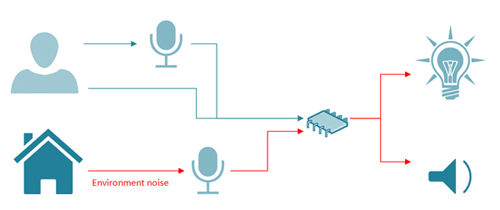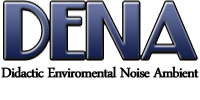What is DENA?
DENA is a transparent system that automatically adjusts microphone volume and light intensity in a room. DENA guarantees optimal condition with a really small effort by the talker.
It mainly suits medium or large rooms like classrooms or conference rooms and adapt itself istantly to match the different environment condition.
The primary users, the talkers, can simply speak and let DENA decide the volume and the light intensity or can decide to modify the behaviour of the system with a simple interface.
How? It is possible to switch to manual control, or they can decide to record the speech, turn on or turn off the speakers and/or the lights and decide which are the correct sound or light levels that Dena will have to mantain.
All the secondary users (the listeners) have to do is to enjoy the conference or the lesson.

« Previous Page | Next Page »
Features
- Volume control based on noise pollution
- Light control based on ambient light
- Different room area management
- Voice control
- Automatic lesson recording
- Customizable
« Previous Page | Next Page »
Funtional Requirements
Audio requirements
- Dena should receive as main input the voice of the talker through the main microphone
- Dena should receive as secondary input the environment noise through the secondary microphones
- Dena should measure the volume of the secondary input and if needed subtract the waveform of the main input
- Dena should provide the main input as output on the speakers with a volume controlled by the value measured in point 3
- Dena should record the main input if requested by the talker in mp3 format
Light requirements
- Dena should receive as third input the value of environment luminosity through luminosity sensors
- Lamps are controlled by Dena in order to emit the proper light intensity, based on value measured in point 1
Voice control requirements
- Dena should understand when the talker give a predetermined voice command through Jasper open source service
- Based on input of point 3.1 Dena should:
- Power on and power off of audio an/or light regulation functions
- Control the enhancement or the reduction of audio and/or light output level
- Invert its audio behaviour. Dena decreases the audio output if the environment noise increases (in opposition to normal behaviour). If the noise decreases below a given threshold, Dena restore normal behaviour.
- Start, pause or stop lecture recording
« Previous Page | Next Page »
Non-Funtional Requirements
- Constraints on measures of noise and light
- Response time: 60 s for light, 15 s for audio
- Maximum recording time: 4 h
- Maximum room size depends on number of microphones available
« Previous Page | Next Page »
System architecture
- Computational node
- Main microphone, used by the talker. It is also the interface to control Dena
- Secondary microphones (one or more) placed in strategic point(s) near the audience
- Light sensors (one or more) placed in strategic point(s) near the audience
- Speaker
- Controllable lights
- Linux environment
- Python language
- Jasper plug in
« Previous Page
Same-page cross-link controls:
Page 1 | Page 2 | Page 3 | Page 4 | Page 5

